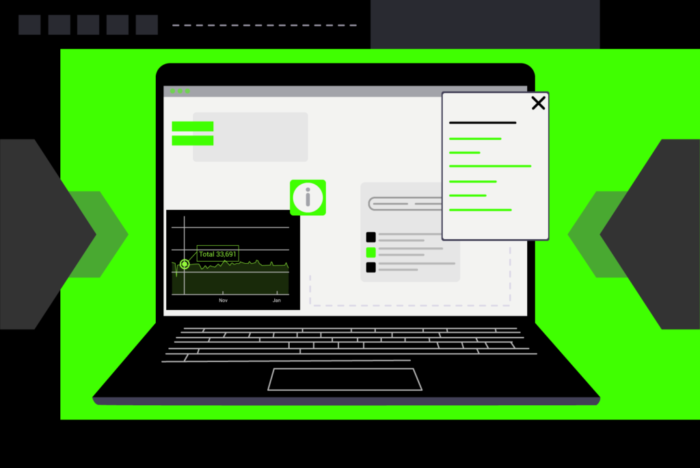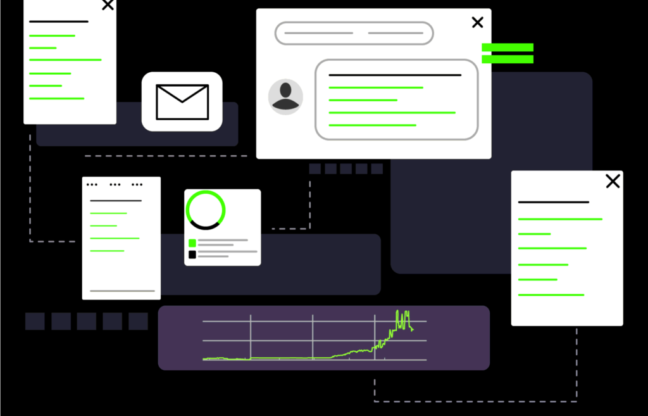I need to mention that I don’t want to discuss whether private blog networks are a black-hat tactic or not. It exists and is rather popular nowadays, so let’s just analyze its effectiveness and reliability in modern SEO.
What is a PBN?
PBN, or private blog network, is a group of privately owned sites that place outbound links to third-party websites. The PBN does not collect traffic from the search engines; it is not intended to take the top positions in Google ranking. All the next points would be logical consequences of this one.
PBN's business model directly contradicts the Google's vision of “websites created for people.” That is why the Google crawler analyses the sites for “footprints" — the” – that the website is a part of a network. If the search bot reveals the network, Google bans all the sites with the same footprints. After the Google ban, PBN owners and their investors lose their investments and the existing link weight on the target site in a moment.
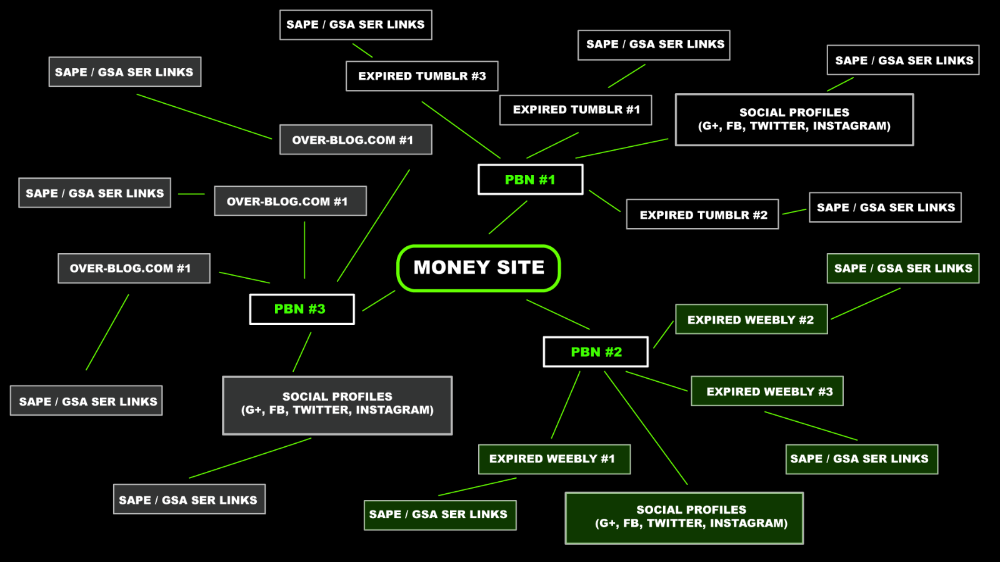
PBN Scheme
I would roughly divide all PBN owners into two categories.
1. The first category develops site networks for their own business needs. They order high-quality text from copywriters, buy the trusted domains, and remove or mask the “footprints.” However, these Santa Clauses charge a high price – and often refuse to work with external customers.
2. The other category of webmasters tries to minimize the prime cost of the network. They pump the domain rating (DR), fill the sites with cheap content, and sell the links for a dime a dozen. These links work in the short-term perspective, but they meet the Google ban and vanish.
PBN Creation Approaches
If you decide to build your own PBN, the general strategy is:
- Buy a network of sites or create it by purchasing expired domains with some history.
- Clean up the organic SEO and eliminate any back-end problems like 404 errors or existing spam links.
- Link each site back to the target in a natural context.
Keep in mind that the best backlinks come from pages that don’t link to many sites.
The dilemma is that if you decide to save some money and buy links, most PBN services won’t go the extra mile, or even the extra step, to ensure the organic portrayal of their links.
PBN services often pump as many links from one page as possible to maximize profit.
The partnership with such a service provider does not bring profit; just the opposite, it can ruin everything.
How does Google Reveal Cheap PBNs?
Today, PBNs are rather sophisticated systems and may be harder for users to spot because the sites span different industries, topics, and layouts.
The most common features of cheap (and, as a result, dangerous networks) determining if a site is part of a PBN — and therefore one that you should avoid like the plague — consider the following:
- Hosting.
Use SpyOnWeb.com service or a similar tool to find if the sites have the same IP address. - Site design.
The owners of the cheap PBN networks usually do not invest in the unique site design. The similar WordPress theme, colors, and navigation menu immediately show if the site belongs to the network. - Site ownership.
It does not take much effort to find who owns the site. The same owner’s name on the suspicious sites is a red flag. The worst option is only the hidden WHOIS data. Probably, the most profound evidence against the site. - Duplicate content.
The simplest way to check the content for plagiarism is to copy one paragraph and search for it on Google. For large texts, professionals use special scanners – web or desktop software. - Images and videos.
You can find similar images or videos using Google search. These days AI quickly recognizes the attempts to equalize the image – inverted or cropped images are not considered unique. However, if there is only one problem, it is not dangerous. - Backlink profile.
Compare the backlink profiles using one of the largest databases – Majestic or Ahrefs. The interlinking will immediately reveal the network.
The backlink profile is the final argument for the PBN network. The visualization of the links between the sites in PBN shows the numerous link pairs – inbound and outbound – and the external links to the same site. Probably these sites are also part of PBN, or they sell the links.
Using the new algorithm, Penguin, Google can reveal such schemes in a moment.
If your site is a part of PBN, say goodbye to high positions in the ranking. In the best scenario, you can remove it from the blacklist manually.
PBN Links: Pros and Cons
I do not appreciate the strict division on the black and white SEO techniques: I prefer discussing the tool.
PBN is a tool; it is not bad or good, it either works or not.
Let me summarize the main arguments in support and against the PBNs.
Pros
- Fast SEO results and ranking. The use of PBNs can create the immediate effect of ranking growth.
- Relatively low price. Many PBNs that sell the backlinks are relatively cheap, and without considering the risks, look more attractive by the price.
- Monetization of the network. If you already own the site’s network, why do you not generate the additional income?
- Control in the niche. Using PBN, the owner can catch control of the chosen niche.
- Relative secrecy. With some tricky techniques, it is possible to hide PBN from the sanctions, but it won’t be long with the developing AI and new Google algorithms.
Cons
- Budgeting. Cheap PBNs do not live long, and high-quality PBNs require costly basics: high-quality content, a domain with a positive history, and so on.
- Google updates. Google AI analyses the unbelievable volumes of the data and finds casual relationships. PBN owners have to be very smart to hide their networks from this all-seeing eye.
- Risk of penalties. If Google finds PBN and puts the sanctions, the penalties can go to the site-acceptor.
- Complexity. PBN is not for the beginner, it requires some technical skills, time, and effort.
- Time. PBN management is a time-consuming process. With the hourly rate for a manager, the price becomes visibly high.
Here is a dilemma: cheap PBN links provide short-term effects and high risk, and expensive PBNs are heavy for the budget. The best PBNs are those owned by you, but they cost a fortune; it is just a separate business. I don’t say you should not use PBNs at all, but I’d advise you to combine it with crowd links and links from the guest posts.
In Natural Links we work with popular web resources that give substantial traffic volume, social signals, and live communication. In combination with natural links, PBNs can work more effectively.
Crowd links and PBN: Shaken not Stirred
You probably know something about crowd marketing if you do SEO and read this blog.
Crowd marketing is a methodology of promoting target sites through direct contact with their target audience on popular online resources.
Simply speaking, it is the placement of the outbound links that generates link weight and traffic flow to your target site.
Crowd marketing raises brand awareness and creates thousands of safe and natural backlinks that nurture organic traffic.
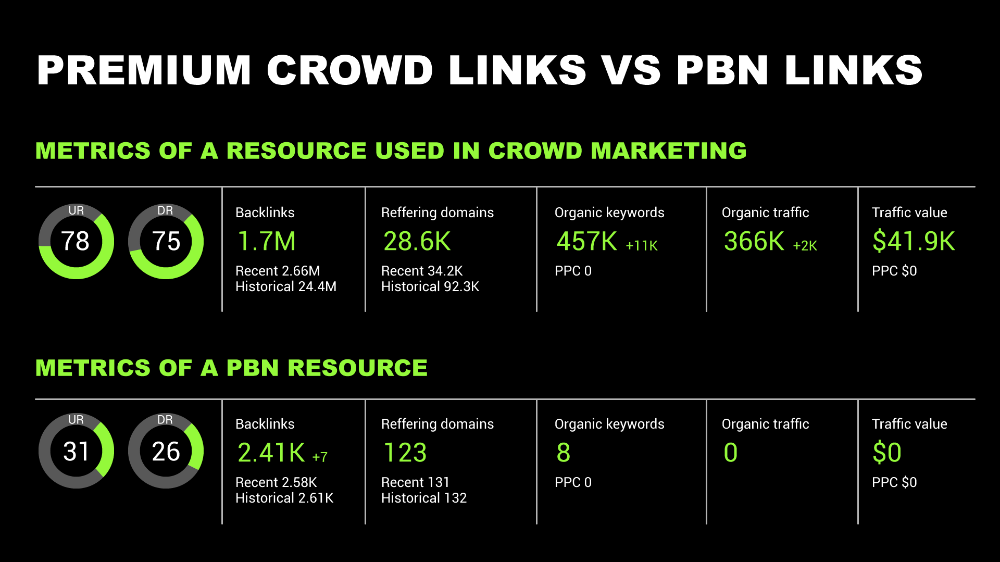
What can crowd marketing do for marketing purposes?
- Increase product visibility;
- Push up the demand;
- Increase brand awareness and shape perception;
- Generate additional traffic;
- Attract potential leads to websites.
What can crowd marketing do for search engine optimization?
- Shape the balanced backlink profile;
- Create the correct anchor list;
- Bring in pure natural links with no automatic posting.
- Add some social signals from the forums and other web resources and diversify your link profile.
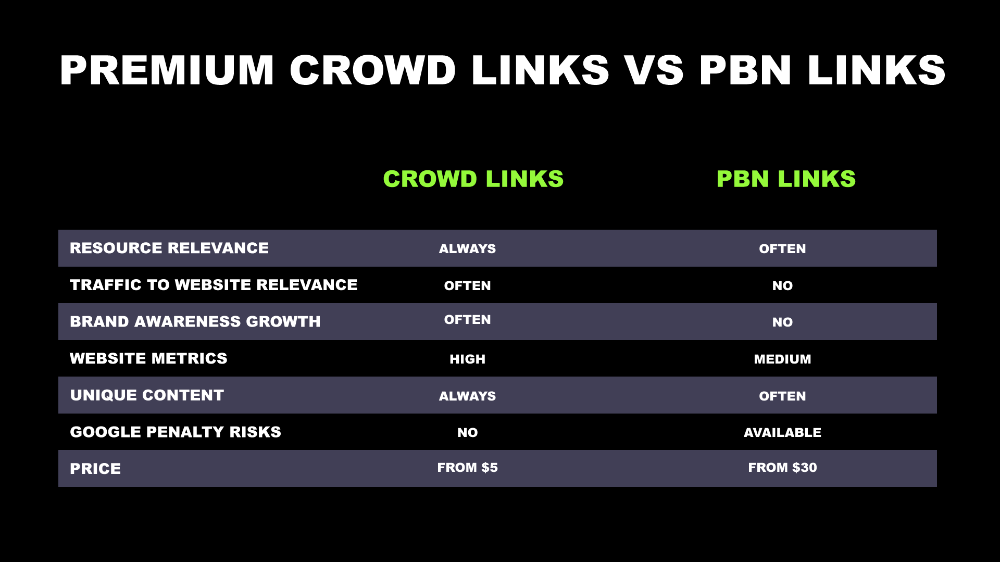
Crowd Marketing vs. Forum Spam: How to Stay on the Light Side?
In 2019 the share of spam messages on the Internet reached 29.8%, as crazy as that. If you think the percentage is too high, just imagine this is a historical minimum! A significant part of the spam is the comments on forums. Webmasters use special software – Xrumer, GSA, etc. – to place thousands of links.
However, spammers disregard the topics, content relevance, and text uniqueness.
Although any moderated forum deletes spam links and bans the accounts, the spammers are looking for new and new methods to pass over moderation.
The reason is simple: the moderated forums have better SEO metrics, and it is a stroke of good luck to place the links here.
There are three levels of moderation in the web resource:
- Weak moderation, many spam links;
- Middle moderation, severe spam links;
- Strong moderation, no spam links.
In high-quality crowd marketing, 80% of links will be posted on the middle-moderated resources, and 20% on the strongly moderated resources.
In the so-called “grey niches” the proportion can differ: strong moderators remove such links quickly.
The more inbound links you have got from the poorly-moderated sites, the closer you are to spam.
Middle-moderated Resources You Can Use for Crowd Marketing
People rely on the opinions of other people. Even those they do not know.
Looking for problem solutions or searching for a product or good, they read reviews or ask for help at forums, special Questions, and Answers sites, social networks, etc.
There are several types of popular resources to post crowd comments on:
- Review sites
- Social platforms/communities
- Thematic forums
- Q&A services
- Comments on relevant websites
What should the webmaster do to place the crowd links on the well-moderated forums?
- Create an excellent base of web resources. Websites, blogs, forums, and social media accounts should be relevant to the service or brand you promote and have high traffic and SEO-related metrics.
- Register and develop the accounts on these resources. It makes sense to register several profiles on each web resource, but use a new email address for each account. Then post some welcome messages, participate in discussions, and create a new topic to show the accounts are alive.
- Before posting something on the forum, make sure you have something to say to these people in their language. Otherwise, they just do not understand you.
So what?
I repeat I do not try to convince you not to use PBN. But I ask it to use it in the right way.
Avoid cheap PBN solutions, care about footprints, build the strategy, and diversify the backlink profile with high-quality Natural Links.
